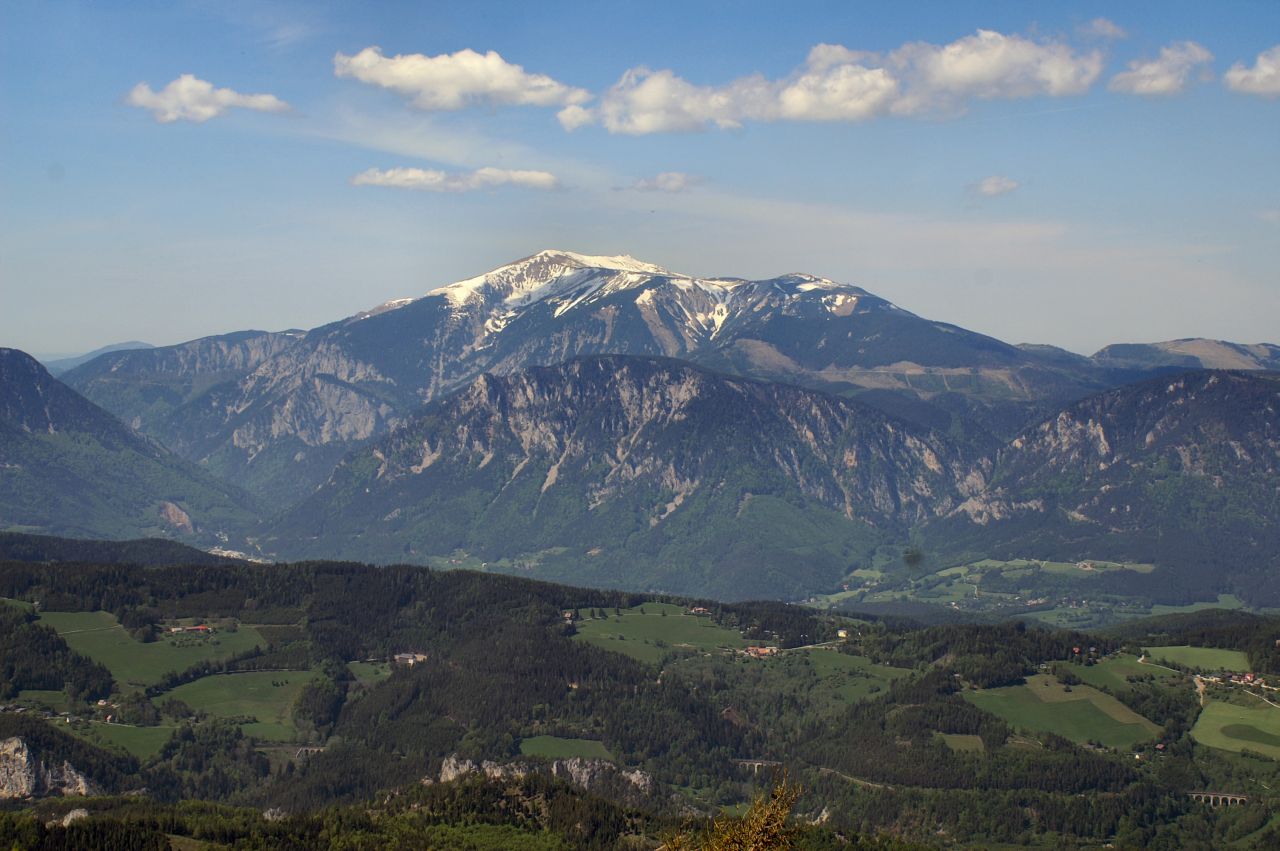two-thousander on:
[Wikipedia]
[Google]
[Amazon]

 Two-thousanders are
Two-thousanders are

 Two-thousanders are
Two-thousanders are mountain
A mountain is an elevated portion of the Earth's crust, generally with steep sides that show significant exposed bedrock. Although definitions vary, a mountain may differ from a plateau in having a limited summit area, and is usually higher t ...
s that have a height of at least 2,000 metres above sea level, but less than 3,000 metres. The term is used in Alpine circles, especially in Europe (e.g. German: ''Zweitausender'').
The two photographs show two typical two-thousanders in the Alps that illustrate different types of mountain. The Säuling (top) is a prominent, individual peak, whereas the Schneeberg (bottom) is an elongated limestone massif.
In ranges like the Allgäu Alps, the Gesäuse or the Styrian-Lower Austrian Limestone Alps the mountain tour descriptions for mountaineers or hikers commonly include the two-thousanders, especially in areas where only a few summits exceed this level. Examples from these regions of the Eastern Alps
The Eastern Alps are usually defined as the area east of a line from Lake Constance and the Alpine Rhine valley, up to the Splügen Pass at the Main chain of the Alps, Alpine divide, and down the Liro (Como), Liro River to Lake Como in the south. ...
are:
* the striking Nebelhorn (2,224 m) near Oberstdorf or the Säuling (2,047 m) near Neuschwanstein,
* the Admonter Reichenstein (2,251 m), Eisenerzer Reichenstein (2,165 m), Großer Pyhrgas (2,244 m) or Hochtor (2,369 m),
* the Hochschwab
The Hochschwab in the Upper Styria is a mountain, , and the highest summit in the eponymous mountain range.
Location
The summit of the Hochschwab is a flat, rock and grass-covered dome, that may easily be climbed from the Schiestlhaus () to ...
(2,277 m) and Vienna
Vienna ( ; ; ) is the capital city, capital, List of largest cities in Austria, most populous city, and one of Federal states of Austria, nine federal states of Austria. It is Austria's primate city, with just over two million inhabitants. ...
's local mountains, the Schneeberg (2,076 m) and the Rax (2,007 m).
The last-mentioned two are also the easternmost two-thousanders in the Alps, before their foothills descend to the Carpathians
The Carpathian Mountains or Carpathians () are a range of mountains forming an arc across Central Europe and Southeast Europe. Roughly long, it is the third-longest European mountain range after the Urals at and the Scandinavian Mountains ...
and into the Pannonian Plain. Analogous examples may also be found in the Western Alps, but are rarer as the peaks are generally higher. In the Carpathians
The Carpathian Mountains or Carpathians () are a range of mountains forming an arc across Central Europe and Southeast Europe. Roughly long, it is the third-longest European mountain range after the Urals at and the Scandinavian Mountains ...
, two-thousanders dominate large regions of highland, for example in Slovakia
Slovakia, officially the Slovak Republic, is a landlocked country in Central Europe. It is bordered by Poland to the north, Ukraine to the east, Hungary to the south, Austria to the west, and the Czech Republic to the northwest. Slovakia's m ...
(including mountains in the High Tatra, Beskids and Low Tatra).
There are no mountains in the UK that reach 2,000 metres. However the term is sometimes used there to refer to mountains over 2,000 ''feet'' in height.Nuttall, John and Nuttall, Anne (2009). ''The Mountains of England and Wales: Vol 1 Wales'', 3rd ed., Cicerone, p. 98. .
See also
*Three-thousander
Three-thousanders are mountains with a height of between , but less than above sea level. Similar terms are commonly used for mountains of other height brackets e. g. four-thousanders or eight-thousanders. In Britain, the term refers to mount ...
s
* Four-thousander
A four-thousander is a mountain summit that is at least 4,000 metres above sea level. The term is popular among European mountaineers and climbers because the highest peaks in Europe fall into this category, and the summits of four-thousanders a ...
s
* Eight-thousander
The eight-thousanders are the 14 mountains recognized by the International Mountaineering and Climbing Federation (UIAA) as being more than in height above sea level, and sufficiently independent of neighbouring peaks. There is no precise defin ...
s
References
{{Reflist Mountains by height Oronyms